The excellent edible Almond mushroom (Agaricus subrufescens) is a mostly northeastern species with a strong scent and bountiful growth. It is a species everyone should know because it grows on disturbed ground, like yards, compost heaps, and gardens. A key defining feature is its delicious scent, like marzipan! It is also reputed to be medicinal.
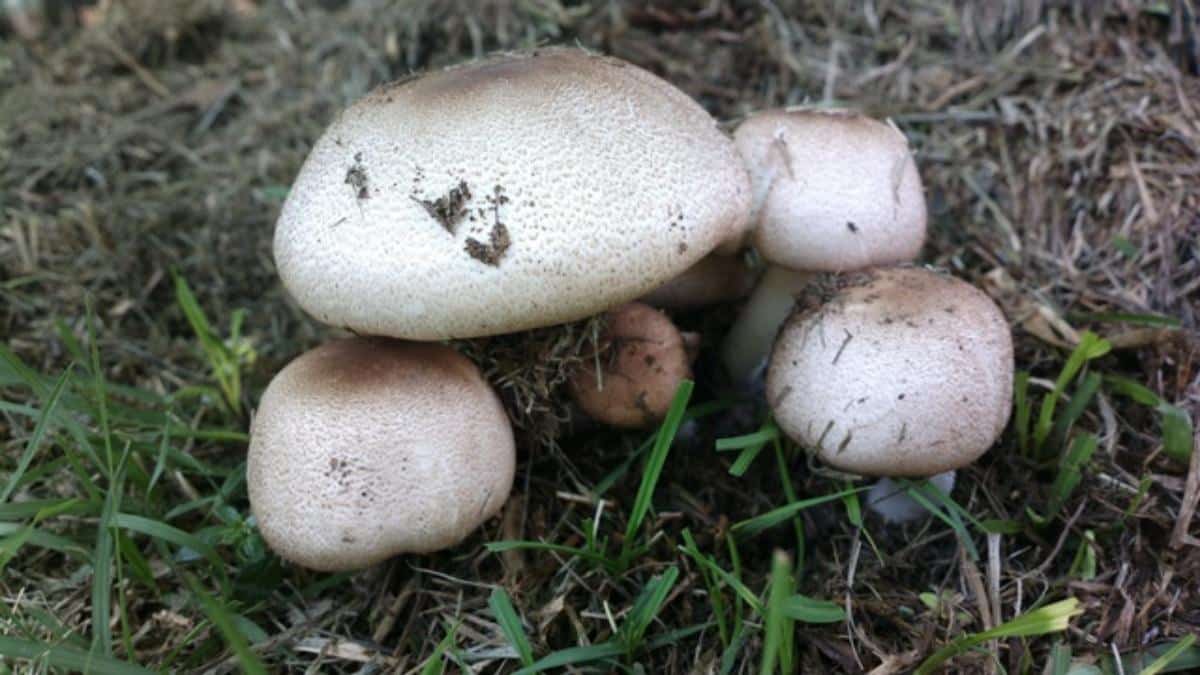
Jump to:
All About The Almond Mushroom
The close relative of the button mushroom goes by many common as well as scientific names – there can be a lot of confusing naming-wise with this one! But, no matter what name you use, this is a top edible species. It features a slightly sweet, nutty flavor and can be used in any dish that calls for button or portobello mushrooms.
Other common names for the almond mushroom are royal sun agaricus, mushroom of the sun, God’s mushroom, and mushroom of life; in Japanese, its name translates to princess matsutake.
The scientific synonyms include Agaricus blazei, Agaricus brasiliensis, and Agaricus rufotegulis. Some older guides list them as separate species, but more recent analysis puts them as all the same. But, to complicate things, many people (especially cultivators) continue to use the outdated Agaricus blazei name. However, since A. subrufescens is the oldest of the names, it gets taxonomic priority and is the scientific name that should be used.
Almond mushroom growers made businesses selling the Agaricus blazei and are reluctant to keep up with current taxonomy and reeducate their buyers. This is especially true among medicinal mushroom marketers who have correlated the A. blazei name with healing. It’s difficult to blame them; this is their living. But, it makes things infinitely confusing for the beginner mushroom forager and grower as the name most commonly used isn’t the proper name.
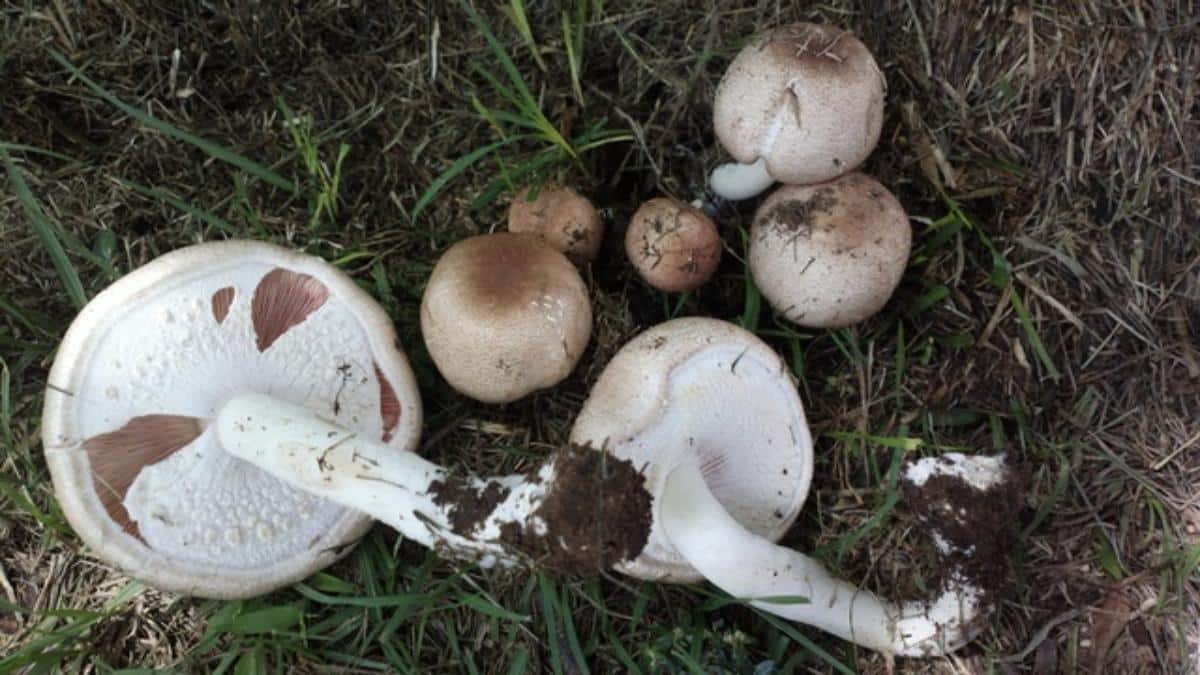
Fun Fact: Agaricus subrufescens was widely cultivated in the 1900s but was replaced by the blander less-aromatic A. bisporus (the common button mushroom). The reasons for this are unknown – maybe some folks objected to the almond extract scent.
Medicinal Properties of Almond Mushrooms
In the medicinal mushroom world, the almond mushroom is known as Agaricus blazei or just ABM. It is used in Japan and other Asian countries to treat hepatitis, diabetes, dermatitis, and high cholesterol, among other things. It is thought to have immunomodulating properties and may be able to fight or prevent cancer.
Tons of supplements on the market feature ABM as a key medicinal ingredient. While the almond mushroom may contain some beneficial properties, it is best to take any claims with a grain of salt.
There are a lot of studies about this species but no long-term or significant human-based ones, so any use of this mushroom as a medicinal should be done with caution. Here’s a great place to start if you want to learn more.
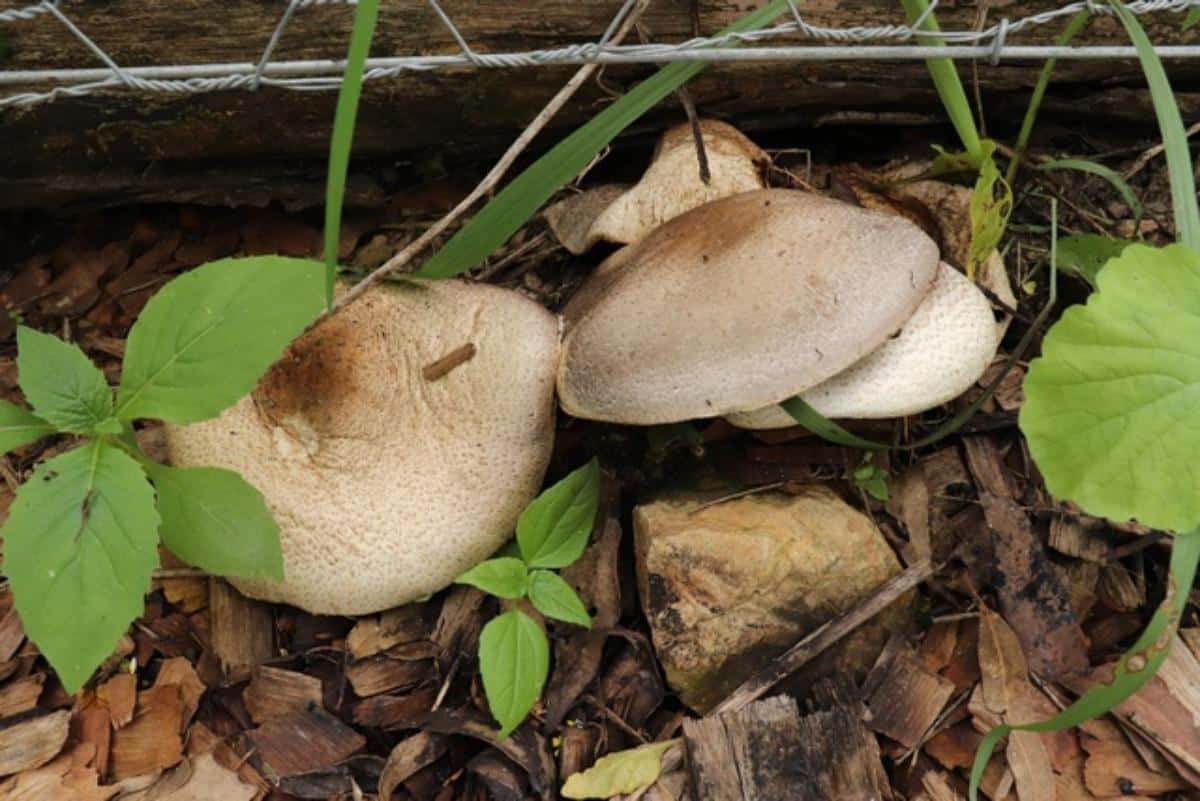
Almond Mushroom Identification Guide
Season
Summer and fall.
Habitat
The almond mushroom grows in rich, humusy soil and compost. It likes leaf litter and disturbed land. This mushroom always grows from the ground and never on trees. It grows singularly but more commonly is found growing in dense, often overlapping clusters.
Almond mushrooms appear primarily in eastern North America, east of the Rocky Mountains. They’re most common in the northeast. They also grow in California, and it is thought they are an introduced species there.
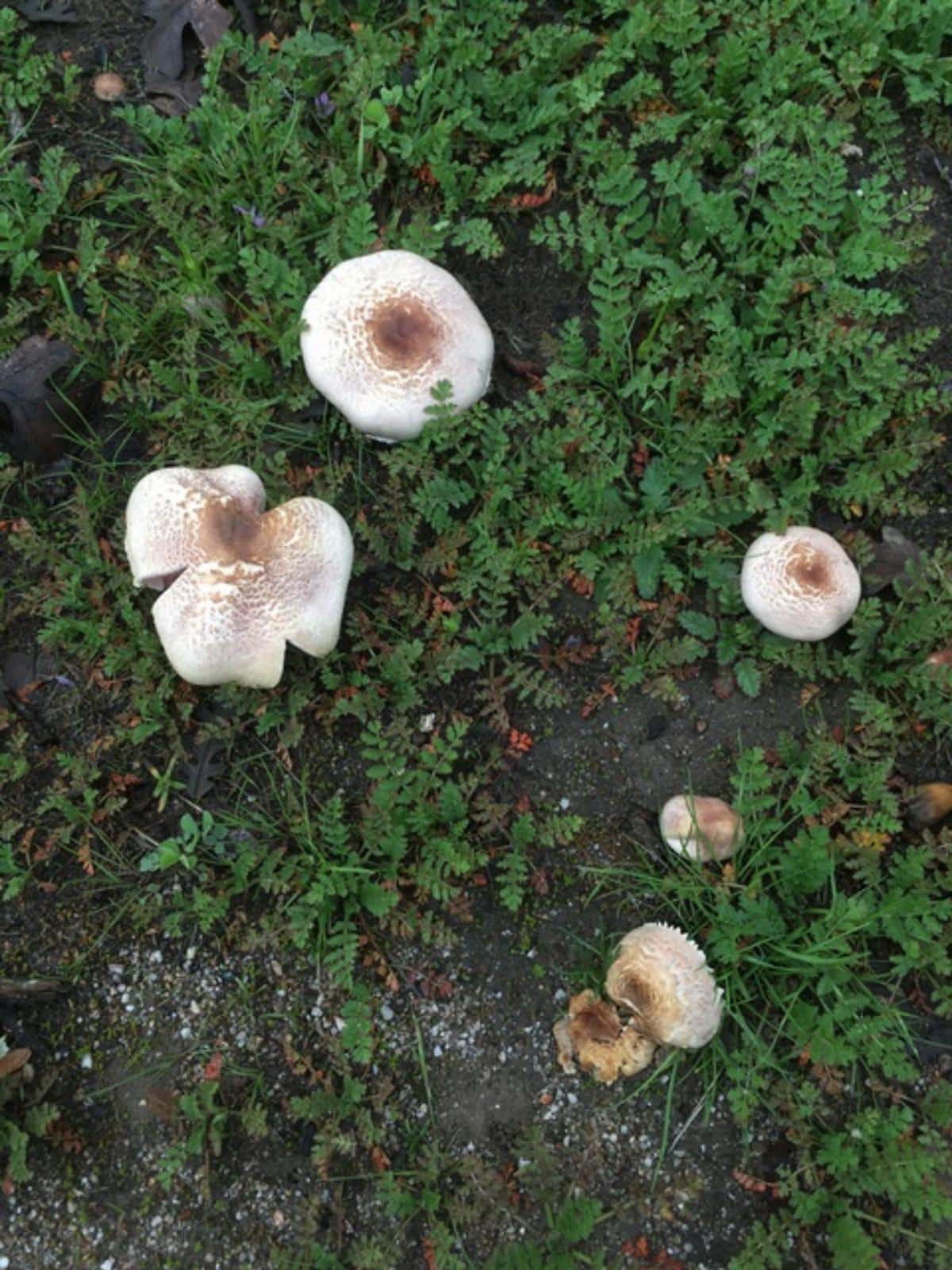
Identification
Cap
The cap of the almond mushroom starts out bell-shaped. It is brownish, often a dull reddish-brown. Sometimes, it is more buff or tan, especially in youth. The top of the cap is covered in very fine silk-like fibers. As the mushroom ages, the cap flattens out, but the edges are still usually rolled under a little bit.
With age, the cap top takes on a scaly appearance with brownish fiber tufts arranged in an outward radiating concentric pattern. It looks a bit like snakeskin. The cap averages 2-7 inches wide, making it a mushroom of considerable size. When young, its shape is like the grocery store button mushroom except with a darker cap – more like a cremini. Then, as it matures, it takes on the shape of the portobello, but again with different coloring.
The cap stains yellowish-brown with handling and age.
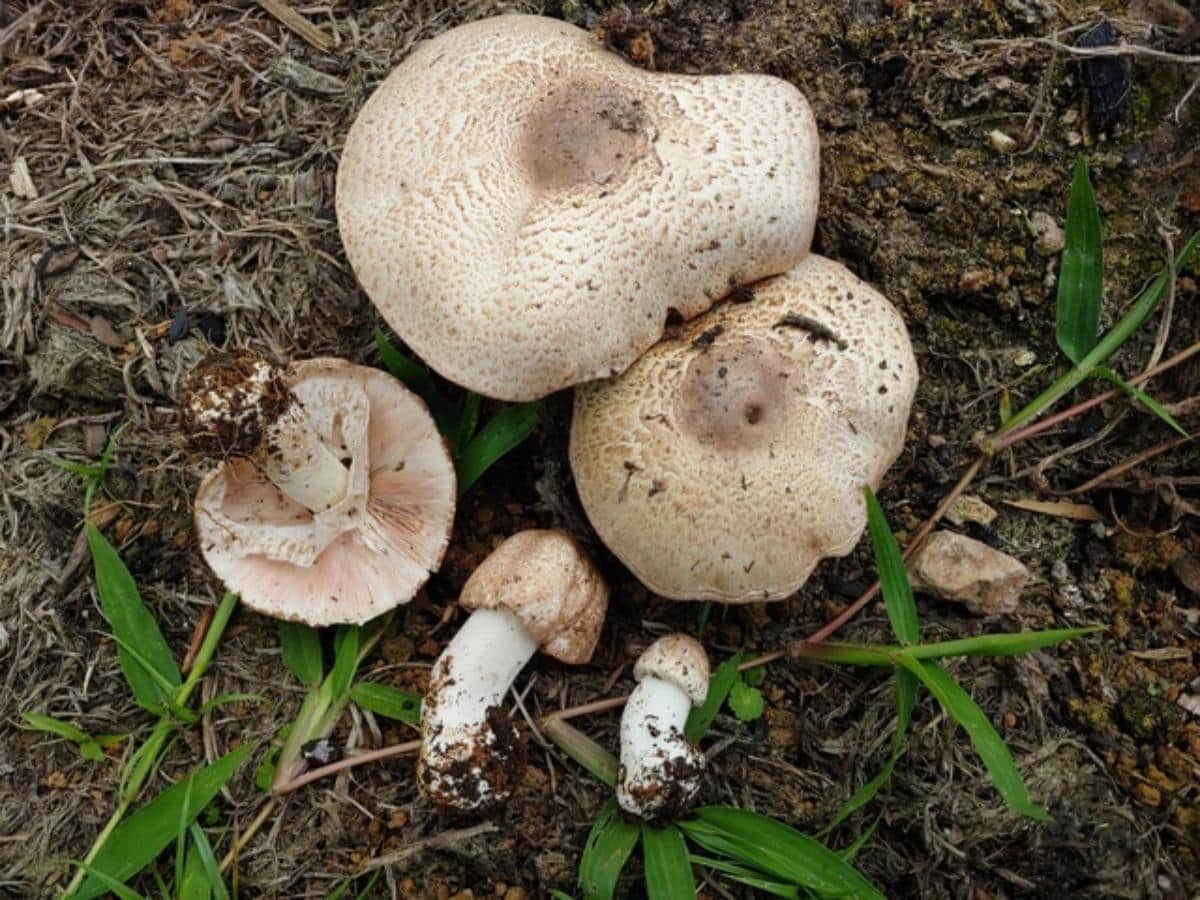
Gills
Almond mushroom gills start out white, then turn pinkish, and finally, dark black-brown. The gills are covered in a white scaly fibrous veil in youth. As the mushroom matures, the veil splits, leaving a cottony material behind. Sometimes, the cottony veil remnants dissolve or fall off the gills, but other times, some are obviously left behind.
The gills do not attach to the stalk and are closely crowded together.
Stem
The stem is whitish or buff colored, smooth, thick, and bulbous at the base. It ranges from 2.5-6 inches long and is between 3/8-5/8 inches thick. Around the top of the stem is a white ring or skirt, which is the remains of the white veil. This skirt is double-layered, whitish, and smooth up on the top side. The underside of the skirt is cotton-like and scaled.
Almond mushroom stems start out solid but then turn hollow with maturity. Towards the base, the stem is covered with white, cottony scales.
Flesh and Odor
The flesh of the almond mushroom is white and does not change color when cut. It smells like almond extract or marzipan.
Spore Print
The spore print is dark purplish-brown.
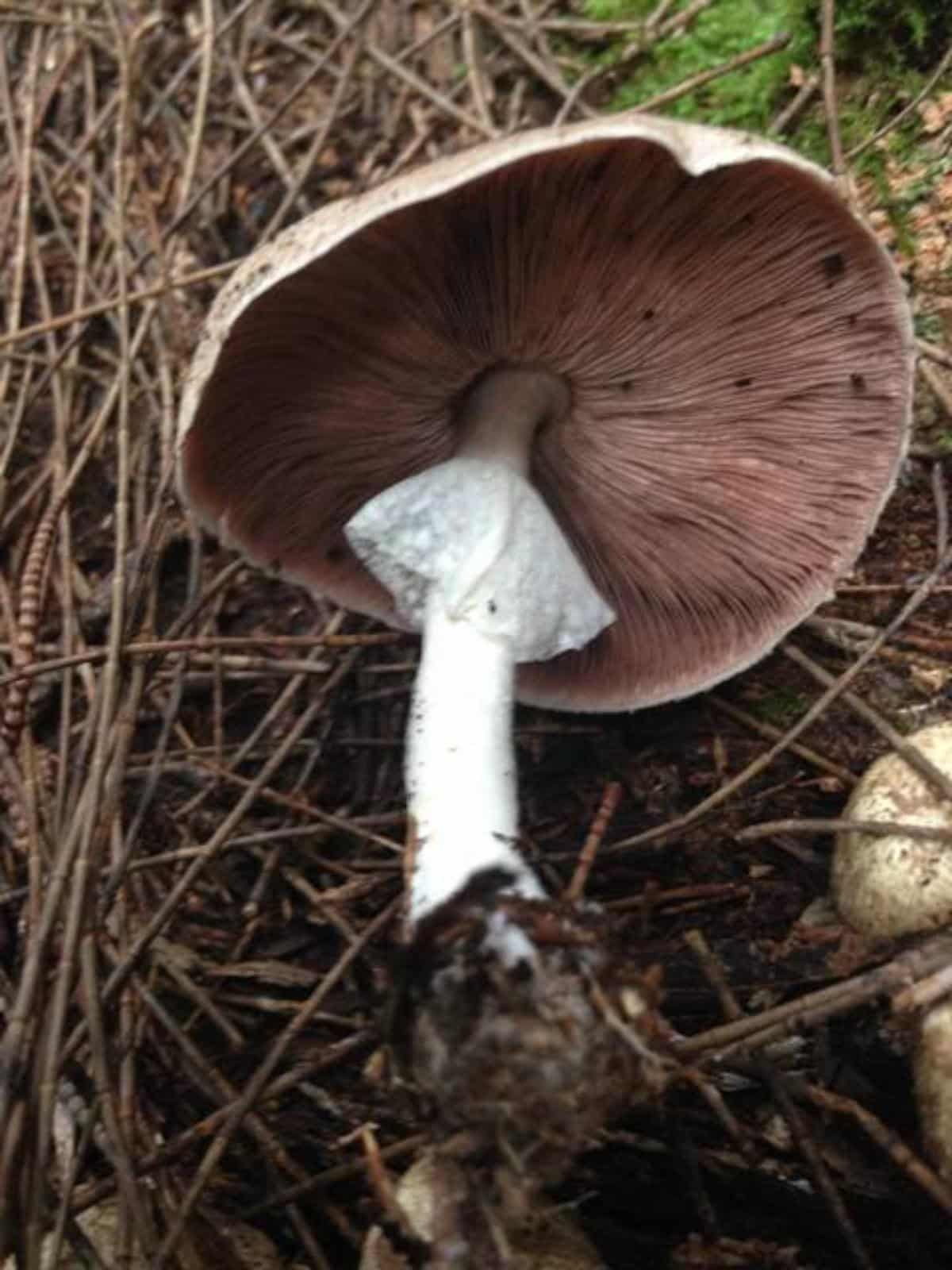
Key identification features:
- Smells like almond extract
- Buff cap with darker brown scales that look a bit like snakeskin
- Cap stains yellowish-brown when handled
- Gills go from white to pinkish to brown-black with age
- Gills not attached to stem
- Stem is white or buff and smooth with no decorations
- Stem is bulbous at the base
- Upper part of the stem has a double-layered white skirt that is smooth above and scaly below
- Around the stem base is white cottony scaly fibers
- Flesh does not change color when cut
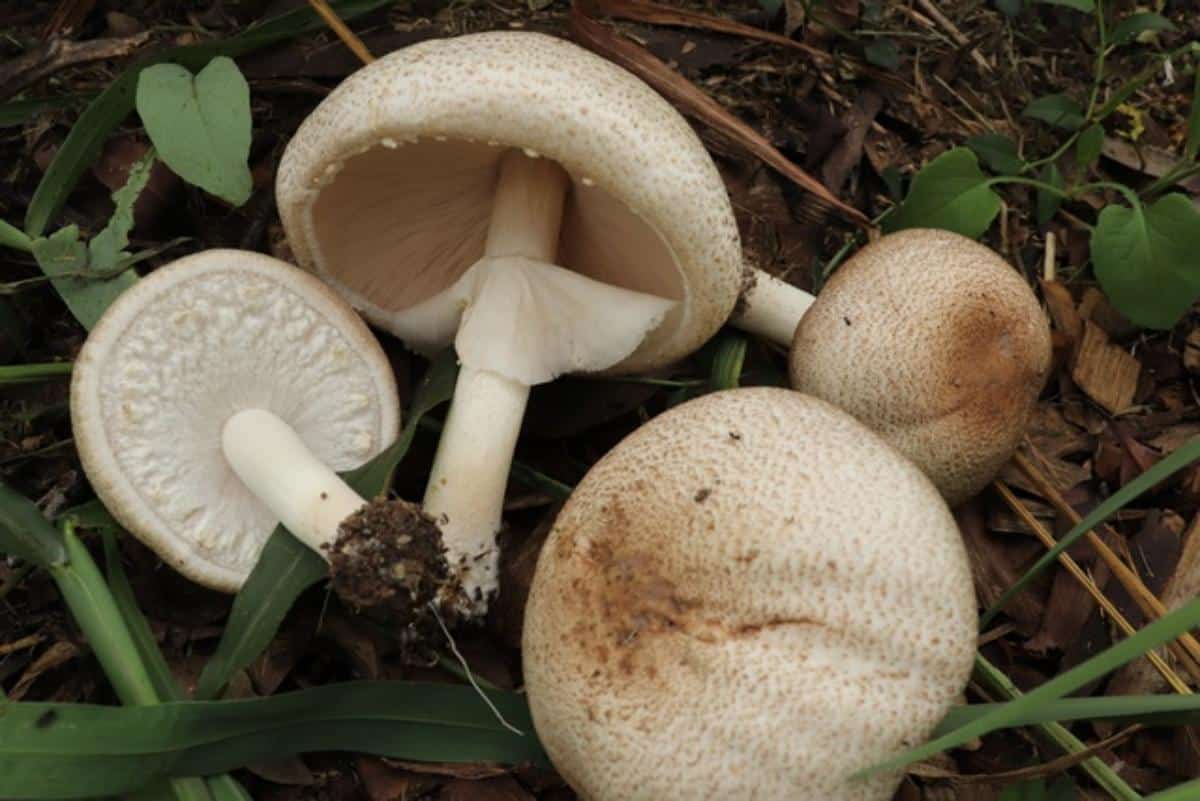
Almond Mushroom Lookalikes
There are approximately 100 Agaricus species in North America. This can complicate the identification of each one, as many share common features, including the almond scent. A lot of the other Agaricus are edible, but some are toxic, so paying attention to the details is imperative.
The Prince (Agaricus augustus)
An almost identical lookalike, the prince is differentiated from the almond mushroom based on its range and stem decoration. The prince is a west coast species, so these two species rarely overlap. Additionally, the prince is covered with white or buff-colored scales below the stem skirt. The prince also has a distinctive almond scent like the almond mushroom, except it is much stronger in the prince. This is an excellent edible species, also.
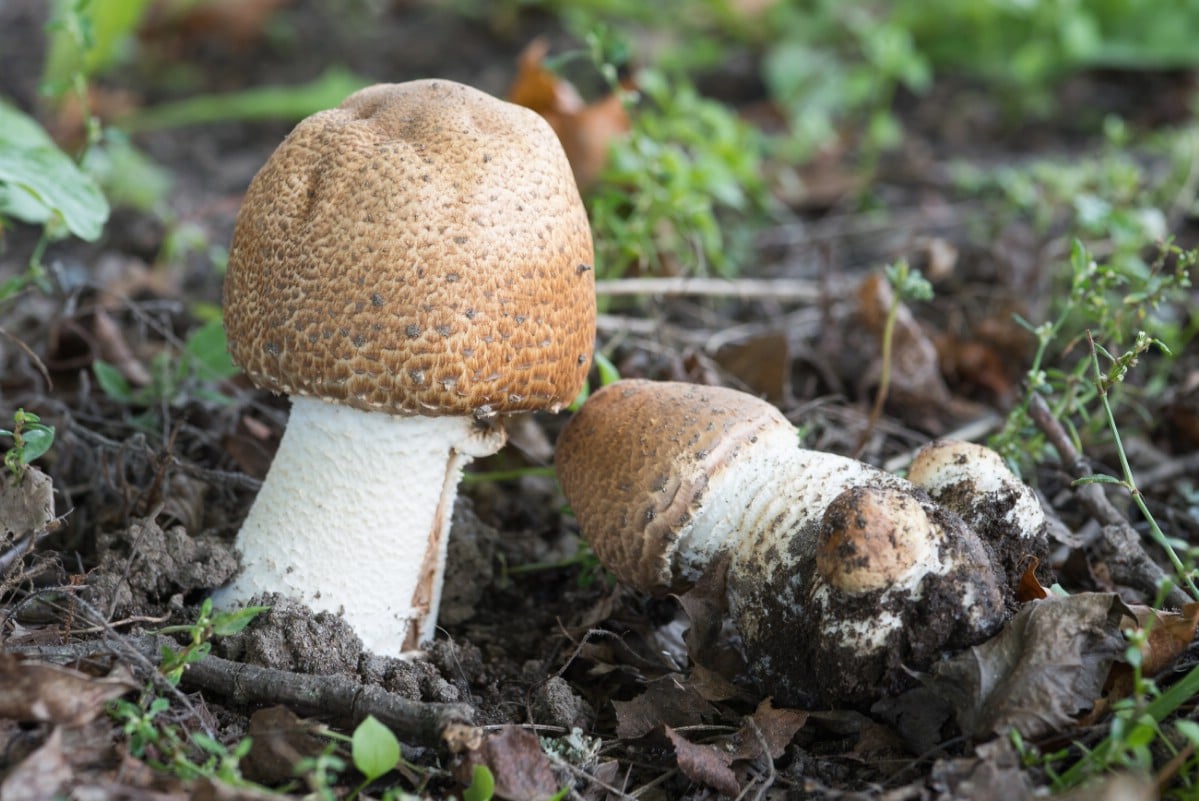
Agaricus nanaugustus
Another almost identical and closely related species with an almond scent, this Agaricus grows on the east coast and in Arizona. The primary difference is habitat. A. nanagustus grows primarily around spruce trees, like blue spruce and Norway spruce. It can also be found around other trees, including oaks. Since the almond mushroom grows on disturbed land, compost, and leaf litter, it is usually pretty easy to figure out which one you’ve found.
The stem is another discerning feature. Almond mushrooms have smooth whitish stems, while A. nanagustus has a hairy stem covered in thin whitish fibers. The stem also bruises reddish-brown.
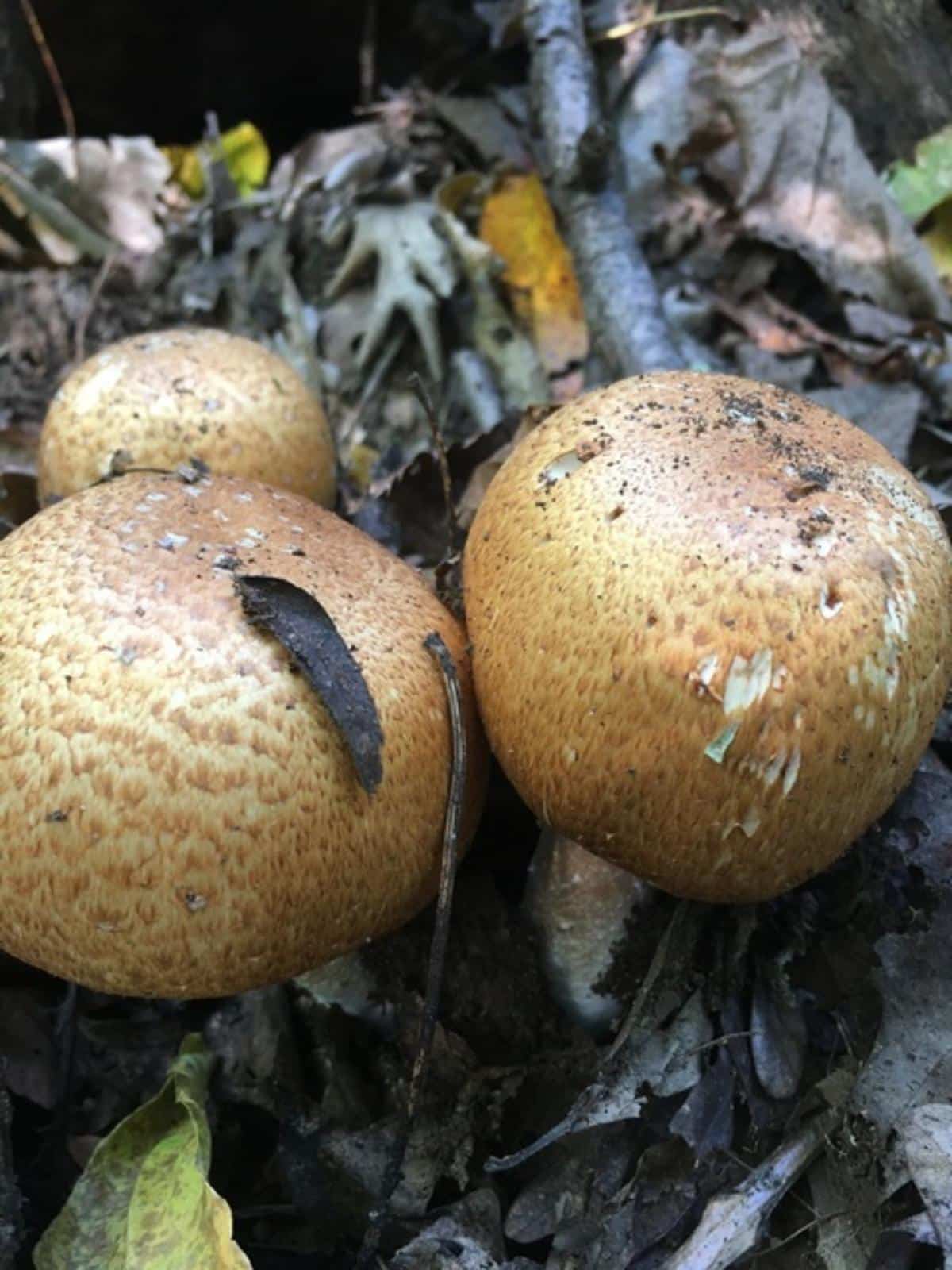
Agaricus julius
This species is the Rocky Mountains version of the prince, which also means it resembles the almond mushroom. The primary difference is habitat. A. julius fruits in high-elevation fir and spruce forests. It has the same distinctive scent and grows on the ground. The cap coloring of A. julius is lighter, with the scales being more light tan than brown, like the almond mushroom. A. julius is a wonderful edible mushroom species.
The Princess (Agaricus perobscurus)
This smaller lookalike only occurs in the San Francisco Bay Area (that we know of). The princess’s cap is darker brown, and it appears in mid to late winter. It smells more like anise than almonds but is easily confused. The princess grows with conifers and hardwoods, with a preference for Monterey Cypress, Monterey Pine, and eucalyptus.
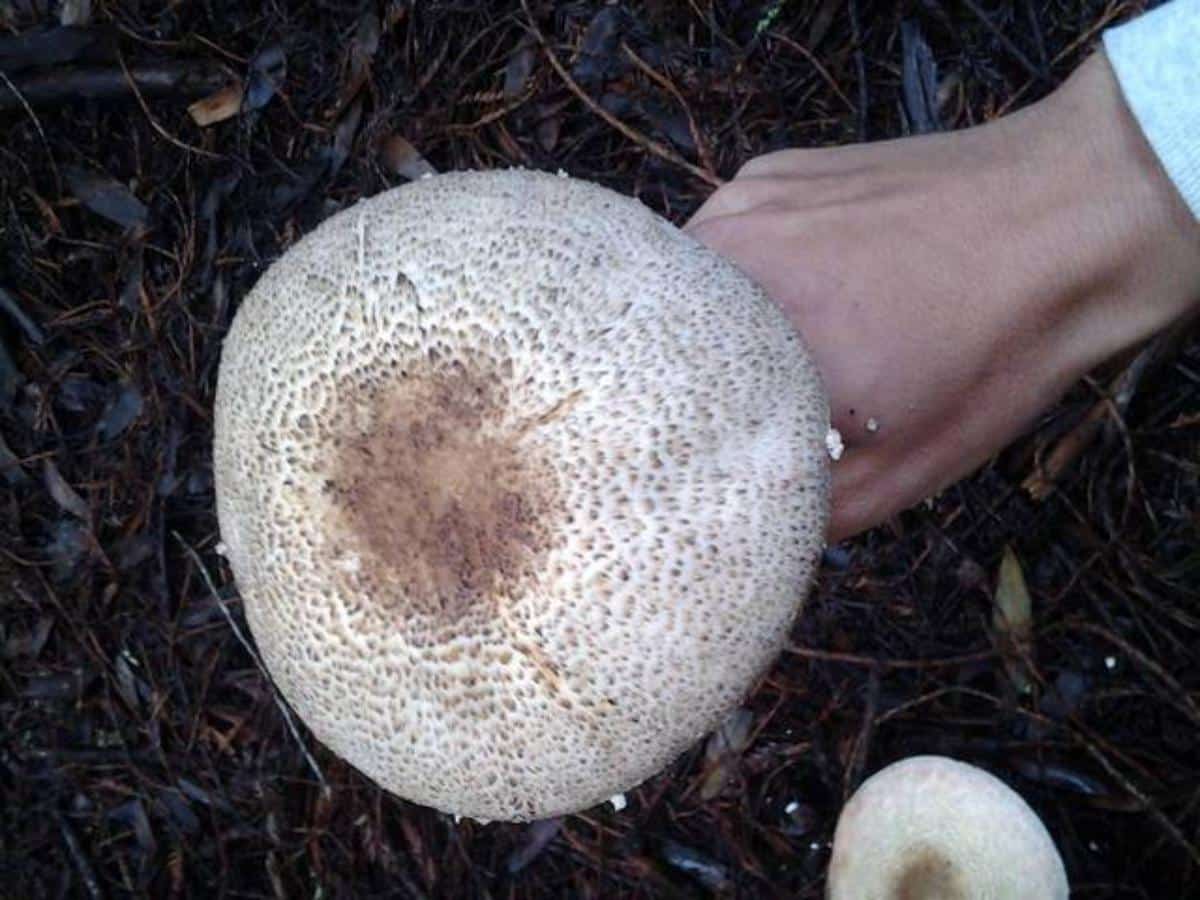
Inky Mushroom (Agaricus moelleri)
The Inky may fruit simultaneously with the almond mushroom and even appear side by side. Remember to smell the mushrooms. The almond mushroom will smell like almonds, while A. moeller smells phenolic – smoky, tar-like, and sweet.
A. moeller is also grayer looking – its scales are grayish-black or grayish-white. This species isn’t deadly poisonous, but it will probably give you some unpleasant digestive issues. Some people can eat it without issue, but we definitely don’t recommend it.
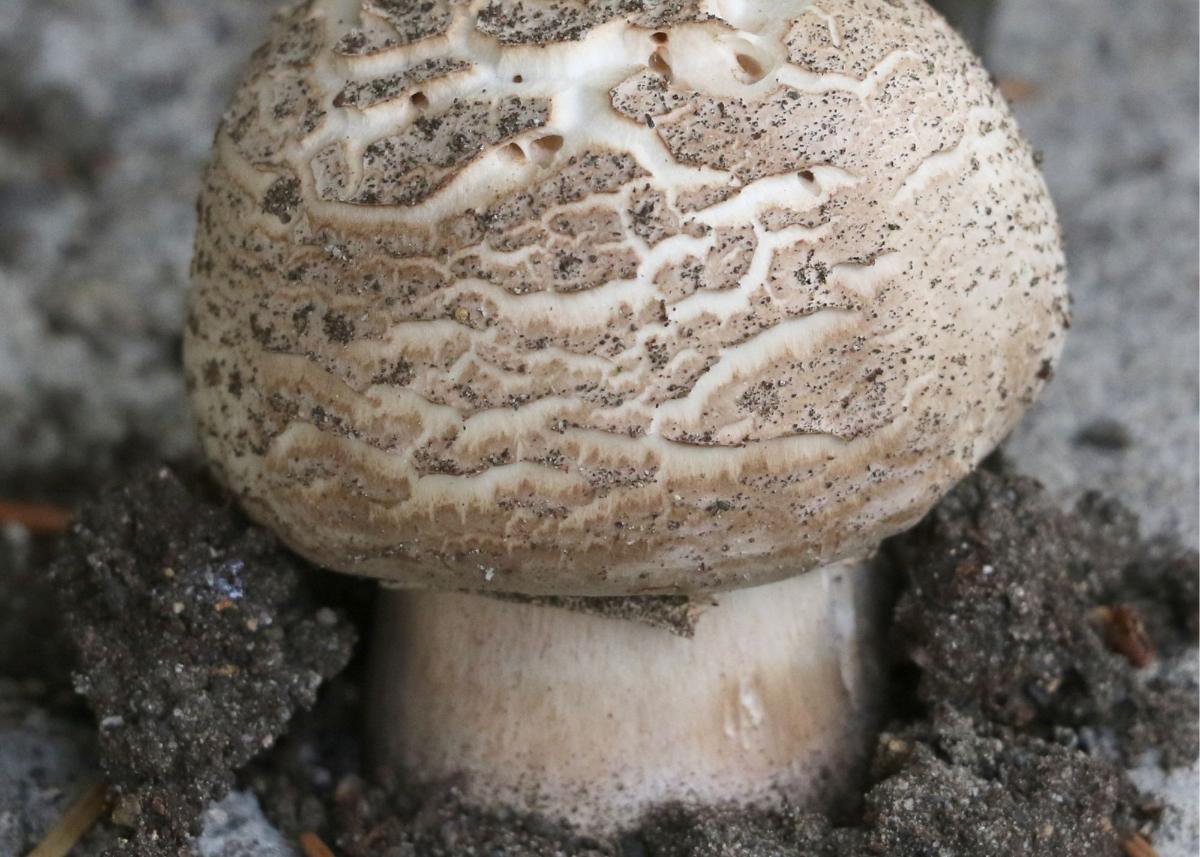
Horse Mushroom (Agaricus arvensis)
A closely related species, the horse mushroom has a white cap and white stem without any scales or markings. Horse mushrooms are an edible Agaricus species.
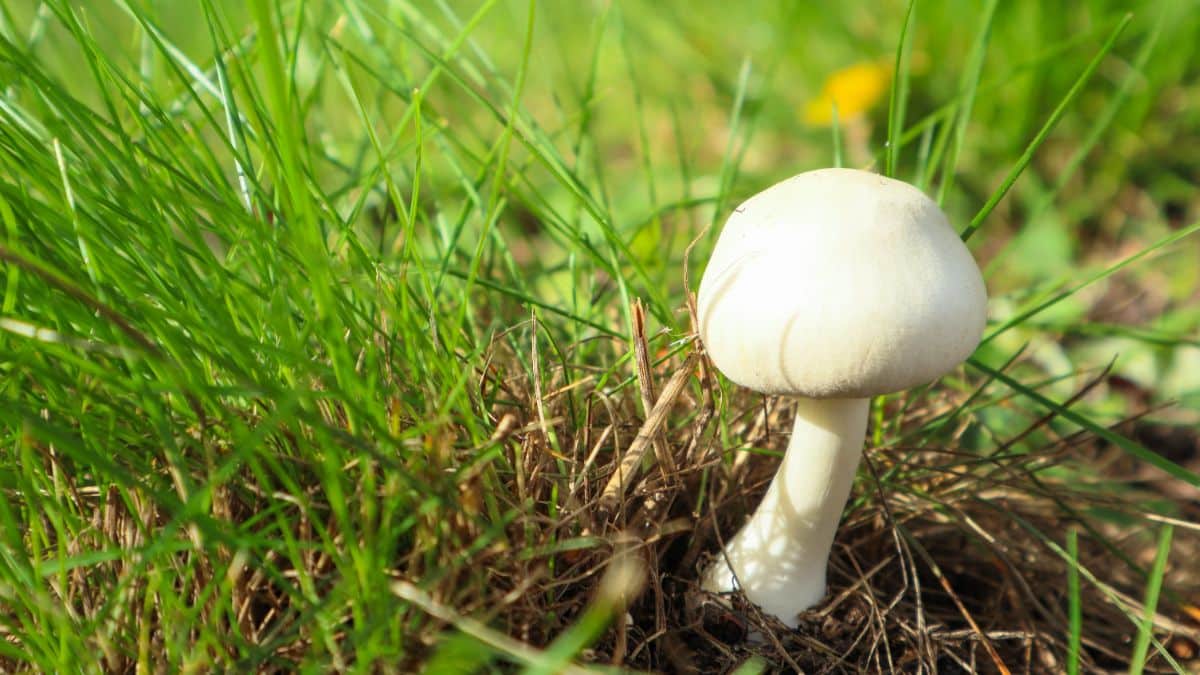
Foraging Almond Mushrooms
Cut off the stem of the almond mushroom at the base. Or you can gently pull it up from the ground, but the stem base may be firmly in the ground. Young almond mushrooms are the best foraging, before their caps expand outwards. They’re also more likely not to be bug-infested at this young stage – a common problem with older specimens. The younger almond mushrooms have a better texture and cook up nicer.
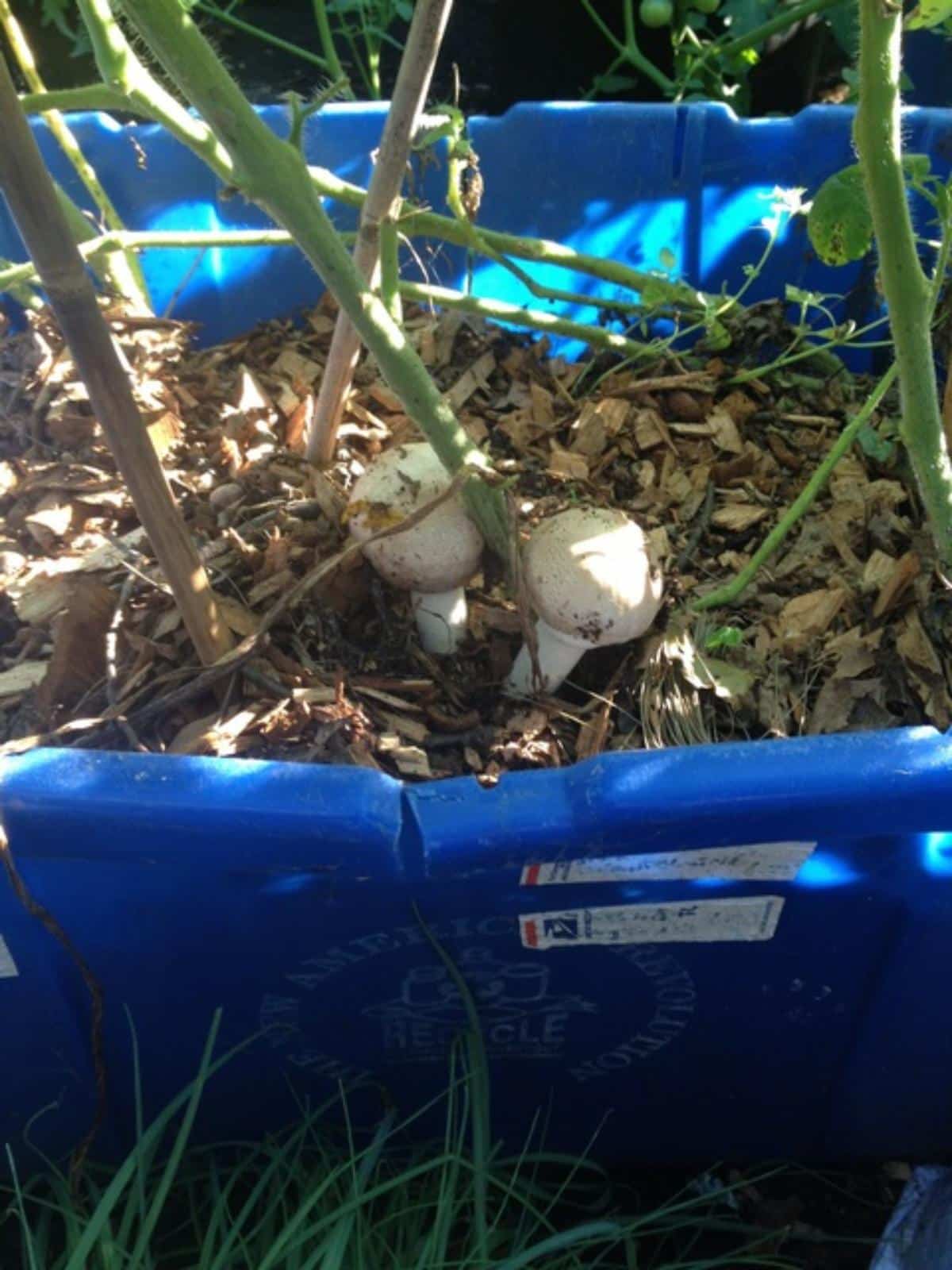
Cooking With Almond Mushrooms
The texture of almond mushrooms is just like a button mushroom. It cooks down a little bit but retains a dense, meaty consistency. Almond mushrooms don’t taste like almonds; instead, they have a lightly sweet, nutty, earthy flavor.
Use almond mushrooms just like button or portobello mushrooms. They can be baked, grilled, broiled, stuffed, sauteed, and fried. They’re excellent on pizza or used in pasta sauce.
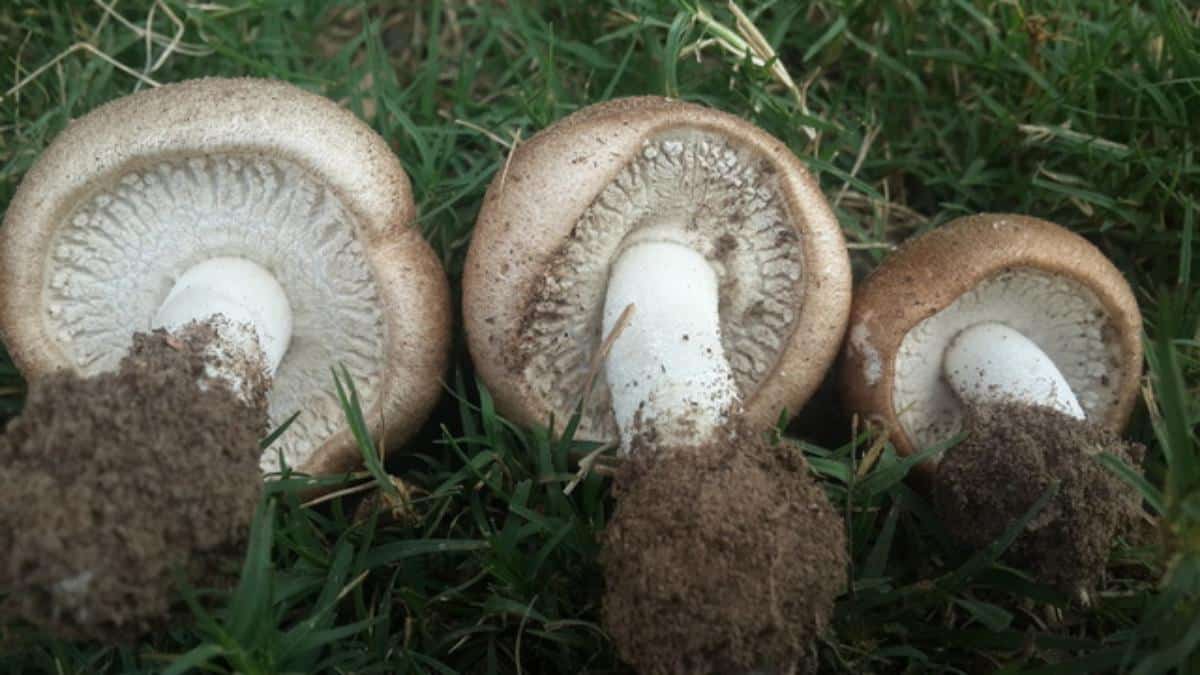
Common Questions About Almond Mushrooms
Can I grow almond mushrooms?
Yes! Like its cousin, the button mushroom, the almond mushroom is an excellent choice for home growers. It is commercially cultivated in some countries. There are quite a few online retailers with almond mushroom spawn and plugs for sale. It is easy to grow and produces prolifically.





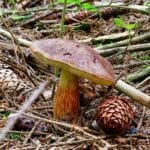
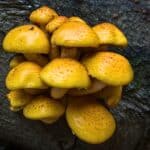
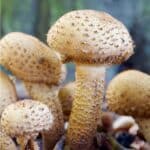
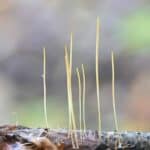
Leave a Reply